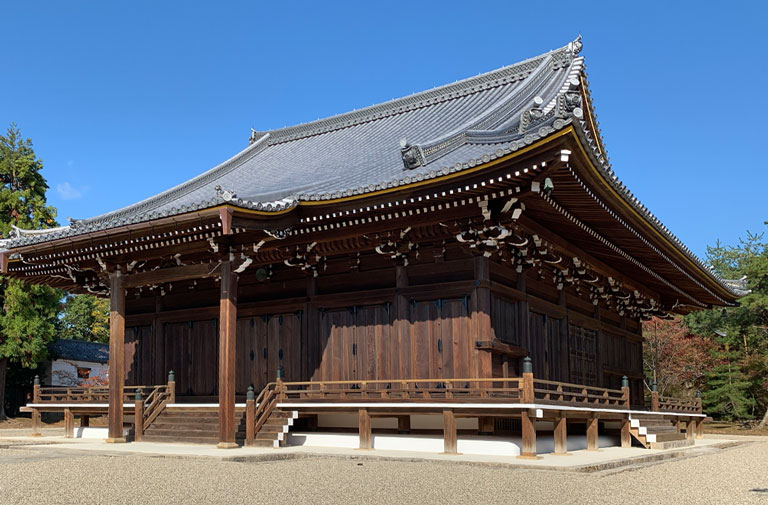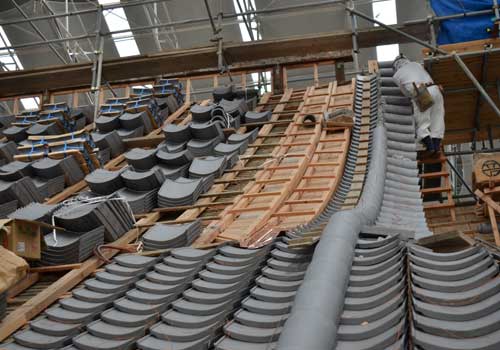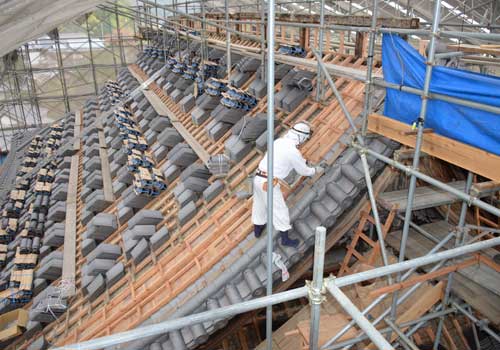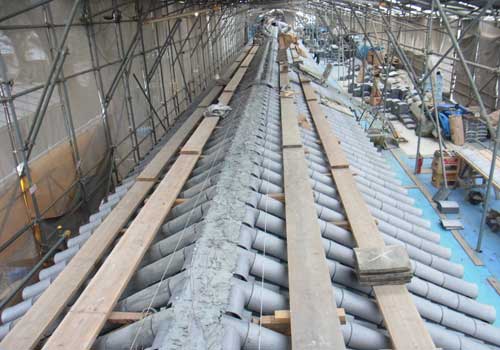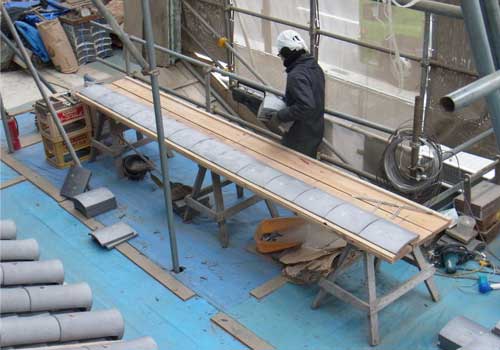
Traditional Roof Tiling
Honkawara-buki refers to the traditional Japanese tiled roofs
that use a mixture of concave and convex tiles.
Achieving the graceful curves requires discernment and talent.
Society for the Preservation
of Traditional
Japanese Roof-Tiling Skills
Designated in 2007
Yamamoto Kawara Kogyo K.K.362
Tanida-cho, Ikoma-shi, Nara.630-0251
Kawara-buki style roofs, using a mixture of concave and convex tiles, are often seen in Buddhist temples, castles, and other traditional structures in Japan. This traditional form of tiling, which requires a considerable degree of skill, provides good protection against the elements, in addition to producing beautifully curved eaves and roofs.
